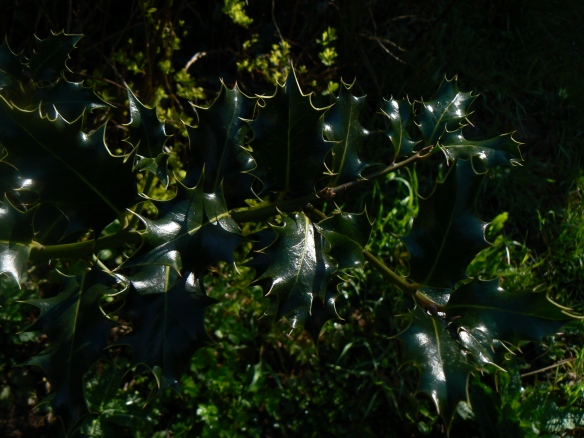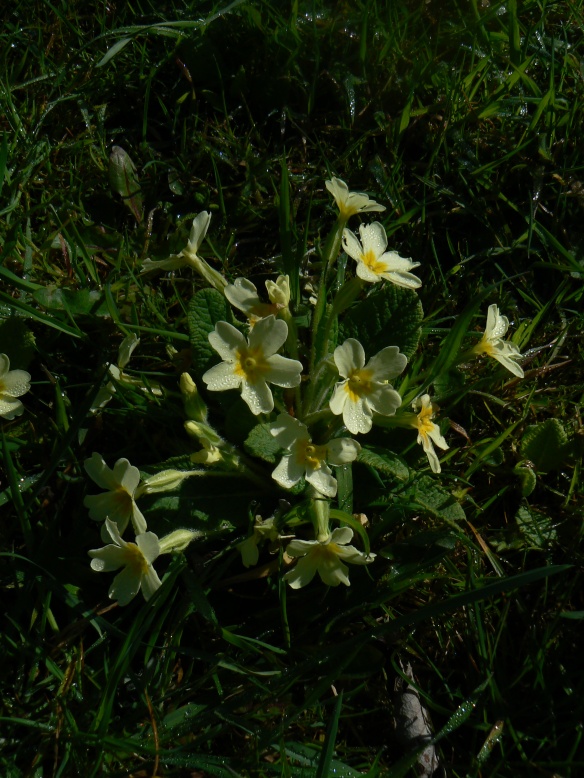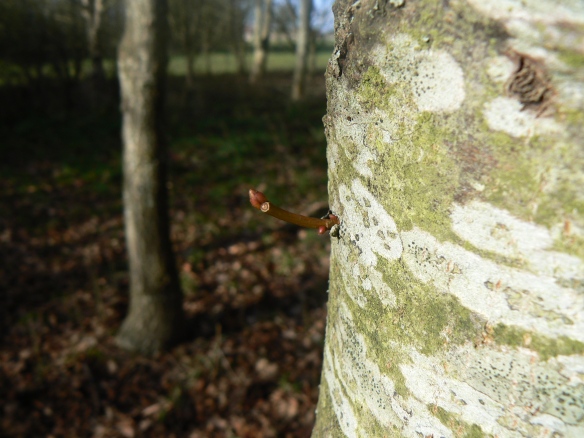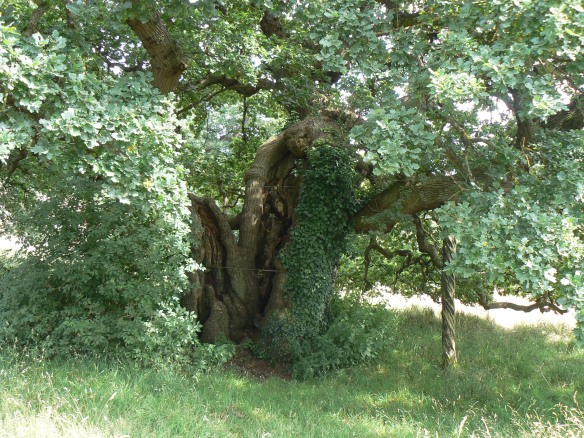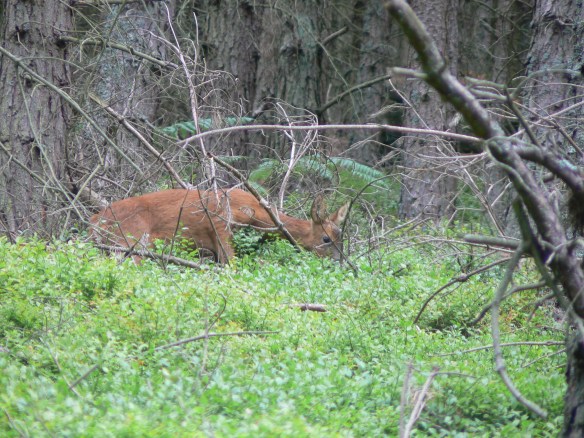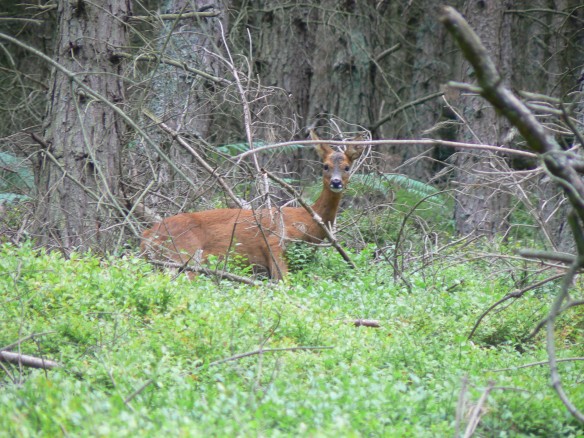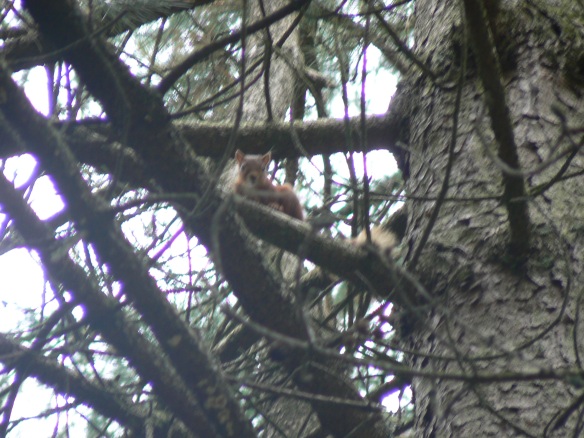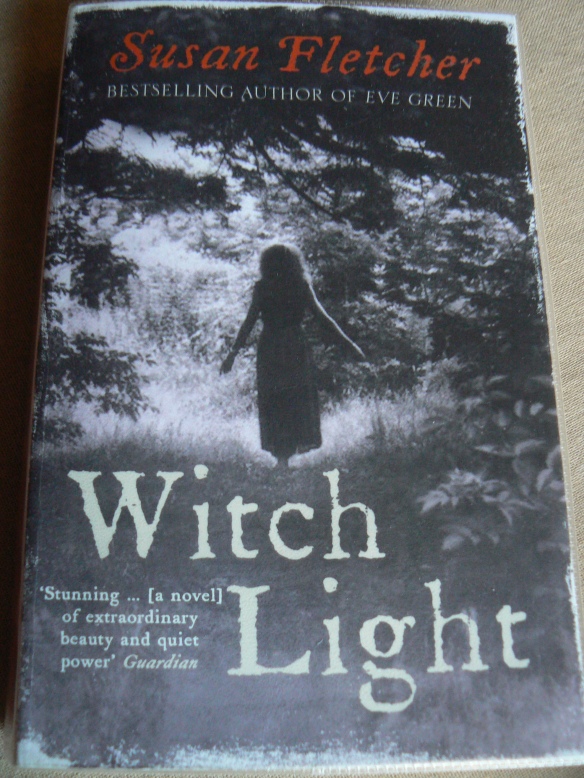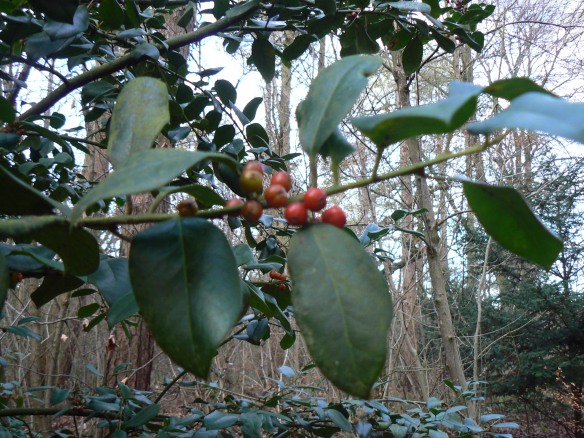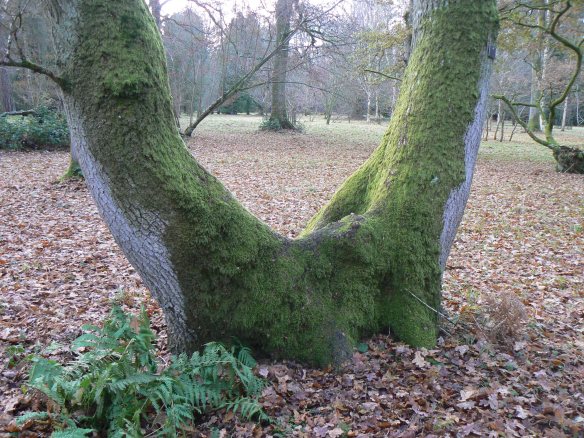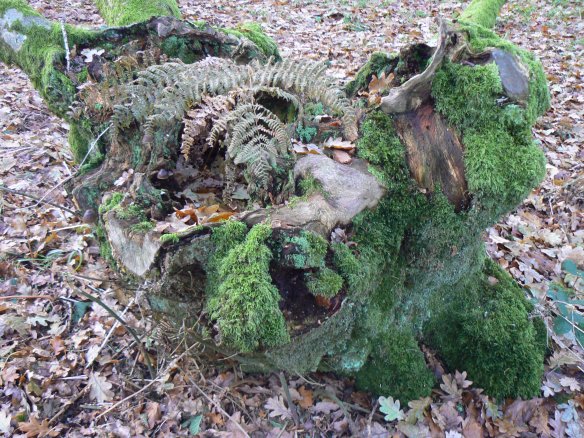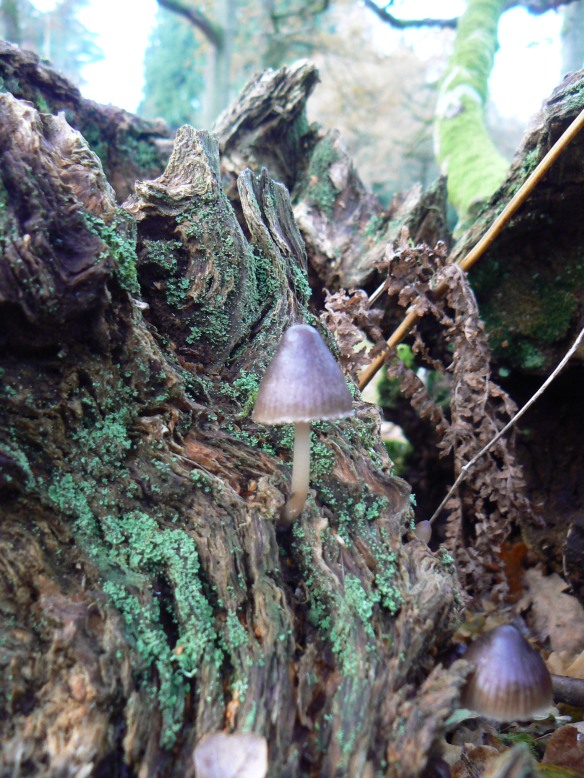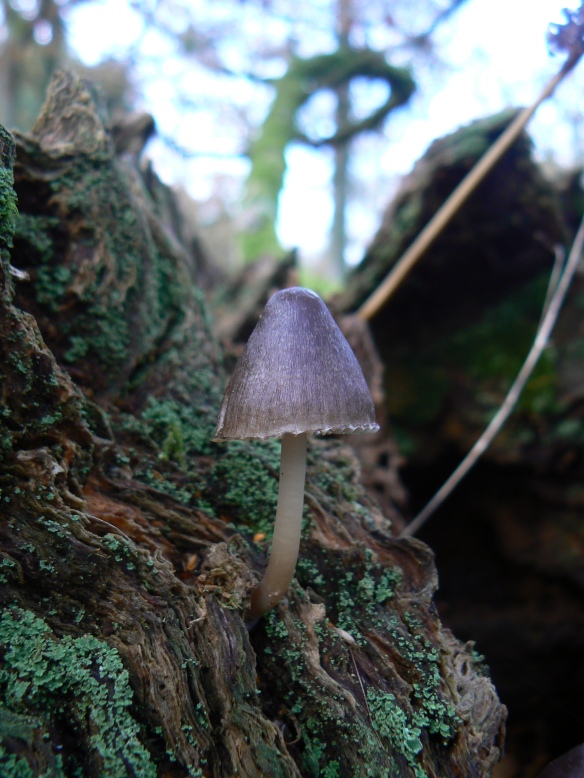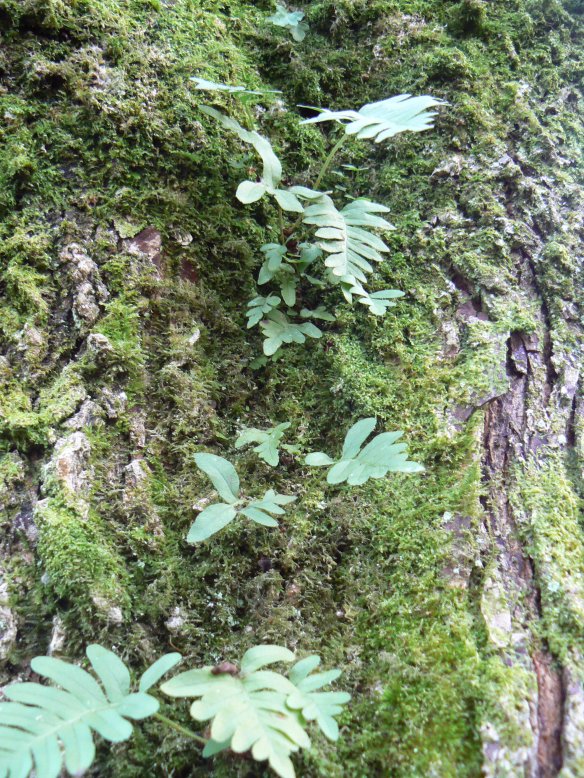On Tuesday 23rd April I wandered the garden, scooping up fragments of light.
I eyed them above me, where they were whole again – a wash of dazzling blue cast across the day. And found them pooled on holly leaves like offerings; shining coins quietly placed.
Some were scattered through trees, or had fallen amongst wood piles. One shimmered on a magpie’s wing – whilst others were caught by scant threads of damson blossom, each flower an open purse fraying at the seams.
As I watched, a queen bumble bee nudged bright edges out from the shadows, testing their resilience against the infant teeth of fresh, green nettles – and I willed her to found a nest in our small patch of earth. Manoeuvring her heavy body close to the open soil, she seemed, for a moment, ready to give up wandering and grant her approval to a spot not far from my feet. As I leaned in to watch her, the holly trees tipped their leaf-light amongst the primroses; let it fragment further in the dew.
Those holly trees are wanderers too; incomers cast adrift from a parent tree that keeps watch from our neighbour’s garden. They have a sturdy, reckless air – like someone who has found their place. Feeling comfortable, they sink into belonging – and give us a sense that we’ve been chosen. They adorn our place and make it more our home too.
Our damsons also arrived this way. Over the wall. They are the unfurling of fruits dropped by trees long since cut down by a neighbour; last chance investments deposited in our garden the year my husband and I were also newly transplanted to this soil. Now, these refugee, house-warming trees are over twenty feet tall, full of birds, blossom – more fruit – and a green-fire glow at sunset. They are gifts – beginnings and endings indistinguishable from each other.
Meanwhile, the queen bee is still taking her turn in the cycle of beginnings. She tests the territory, inches back and forth in a mid-air-drone, finds wanting the patch of earth below the damsons; gives herself up to a gust of air – and disappears over the fence and out of sight…
She leaves me scratching about in my own equally wanting soil – seeking words. Elusive things, like the peacock butterfly suddenly blown high over my head; a shadow extinguished from sight too fast to reveal its colours or pattern.
The significance of the day is uppermost in my mind; 23rd April – Shakespeare’s birthday, and death-day. An end swallowed by a beginning.
And Shakespeare – consummate spinner of words – can always catch what I ask for…
He throws it back to me like something plucked from a sunlit web – and I seize it, gratefully:
Polonius: What do you read, my lord?
Hamlet: Words, words, words
(Hamlet Act II, Scene II – William Shakespeare)
Words. They can say so much and contain such power.They can capture and convey beauty – and be, in themselves, beautiful. They can be cruel, kind, magnanimous, insightful, inspiring, blunt, elegant, sinuous, glorious, hypnotic, ugly, obtuse. They are the conveyors of ideas and intention. They can sting, they can soothe. They are mighty.
And yet they are just – words.
‘My words fly up, my thoughts remain below.
Words without thoughts never to heaven go.’(Hamlet, Act III, scene II – William Shakespeare)
Words sometimes fail. Words can be bricks in a wall, obscuring what lies behind. They can disconnect from meaning – and truth.
For some people, words are not biddable at all. They live without them, their senses aligned to other frequencies; tuning in to listen, but answering – and maybe hearing – in different ways.
My son doesn’t have words. He cannot speak. I’ve often heard it said that language is what makes our species somehow “special” – that the ability to speak defines what makes us human. But is my son not human? And are our words the only language at work in the world?
Language is all around us – in the birdsong; in the chemical signals passed between the trees; in the wind as it describes the mood of the day; in the pungency of fox scent reaching my nostrils as I listen to the robin claim his territory. The whole day is full of wordless voice.
‘Perhaps there is a language that is not made of words and everything in the world understands it. Perhaps there is a soul hidden in everything and it can always speak, without even making a sound, to another soul.’
(From A Little Princess – Frances Hodgson Burnett)
‘And this our life, exempt from public haunt,
Finds tongues in trees, books in the running brooks,
Sermons in stones…’(As You Like It, Act II, scene I – William Shakespeare)
During our long weeks in hospital with our son, we often felt keenly the lack of words. Doctors and nurses would look to my husband and I to interpret our son’s feelings, his reactions, his thoughts. We were often lost in a blank of not knowing – in a pit of bewilderment and distress; his and ours. We could guess, but could not be sure we were being accurate. We were in a new situation for all of us. Our usual parameters were gone. And even with words, we could not know our son’s mind. He could not know ours. Can any human being know another human being’s mind, intentions, feelings fully?
But without words, we can sometimes listen more closely – and keenly – to that other language which is heard more loudly by intuition – and which is so often dismissed or obscured behind a tangle of surface communication. Language is in my son’s eyes, his expression, his demeanour, his wordless singing. It is in a connection built in ways I can’t describe or explain with words. When asked how my son communicates with me, I can’t tell someone else how it happens. It just does. We feel and respond. And when, during his long ordeal in hospital, I found words that might work, I fed them to him like manna of reassurance. I laid each coin of words on the palm of his hand, so that he could feel the weight of the thought behind them. I saw his eyes listening to the intentions and the whys the words carried, if not to the precision of their particular meaning. I saw him understand.
‘Where words are scarce they are seldom spent in vain.’
(Richard II, Act II, scene I – William Shakespeare)
During 23rd April – the day that was both Shakespeare’s birth-and-death-day, my thoughts were already beginning to turn towards this week and to May Day; Beltane; time of renewal, new beginnings; the death of winter from which the summer is born; festival of fire; the phoenix from the ashes; Persephone travelling from the underworld to rise again.
And now it is the second of May – and in the passing of the days between Shakespeare’s birthday and today, the green firing of spring has ignited from tree to tree, bush to bush – the leaves opening more and more in front of our very eyes.
And we feel and respond to the wordless language of the season…
But words fail me again. This post hasn’t said what I wanted it to say; hasn’t conveyed exactly the thoughts I wanted to convey. But then words never do. When describing the true nature of the tree, words never (unless you’re Shakespeare!) reach to contain every far flung leaf adrift on the wind.
I’m very aware too that quotes from Shakespeare, placed out of context as I’ve placed them here, never really represent their true reach. Sometimes they transmute, taking on a significance that tips the scales a particular way. But, put them back into context and that apparent significance becomes problematic. We then have to follow a different trail of light-clues; ask ourselves what Shakespeare built around those words in terms of form and structure. How it all interacts. And whether the character who voiced the words is perhaps fooling himself, or lacking belief in what he professes, or maybe deliberately deceiving others…
When words dis-locate from their original surroundings, they become chameleons – both liberated and limited by the colours of their new environment – though, in Shakespeare’s case, ever retaining their magical, delicious ambiguity. But, behind the words is their intuitive touch on our mind – which, through and around those clusters of letters and shifting locations, reaches us direct. And if, in our response, we have heard the poetry behind the poem, felt that connection, we experience a deeper, wordless something begin to piece together – another fragment of light illuminating a little more of the whole.
Time is impatient with my own inadequate attempts to capture thoughts, so I shall have to be content with the fraying threads of this blog post and let my words fall where they will. So this is me, scooping up the fragments of light, trying to piece them together – and moving on into new Bookish Nature beginnings…
Thank you again to everyone who left such wonderful messages of support and encouragement during the darker times. They meant a lot to me.
So far, here in the South West of England, ‘the darling buds of May’ have not opened to ‘Rough winds’ but to balmy and glorious sunshine. These early May days have been filled with a wordless voice of awakening and shimmering exuberance.
My words fail again in attempting to transmit the true spirit of that voice – but, thanks to Sonya Chasey (who pointed me towards the Loreena McKennitt page on Grooveshark – many thanks, Sonya!) I discovered a while back the beautiful Huron ‘Beltane’ Fire Dance (from Loreena’s album Parallel Dreams) – which brims with that spirit of this time of year – and which pieces together for us those sparkling facets of intuitive, illuminating light via music; another wordless language that speaks so profoundly.
Whether you were out and about enjoying May Day revels yesterday, or are planning some for the Holiday Weekend – or are simply revelling in the spring – (or, indeed, are enjoying whatever seasonal fragments of light illuminate your own particular part of the world right now) – a very Merry May-time to you all!
Huron ‘Beltane’ Fire Dance, Loreena Mckennitt, performed live in Spain (part of a concert recorded on the DVD/CD set Nights from the Alhambra):

